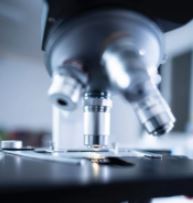
Gross domestic expenditure on research and development (GERD) has increased in real terms for the first time in four years.
GERD as a percentage of the Gross Domestic Product (GDP) reached 0.62% in 2021/22, up from 0.60% in the previous year, indicating a slight improvement in research and development (R&D) intensity.
This represents a 6.9% year-on-year increase from R25.965 billion in 2020/21 to R27.756 billion in 2021/22, in terms of 2015 prices.
This is according to the latest South African National Survey of Research and Experimental Development.
The Human Sciences Research Council (HSRC) conducts an annual survey for Science, Technology and Innovation Indicators (CeSTII) on behalf of the Department of Science and Technology.
Chief Research Specialist and Principal Investigator at the HSRC, Dr Nazeem Mustapha, observed that countries that invest in research and development (R&D) at a high intensity are more likely to lead in global competitiveness.
“South Africa is striving to reach higher levels of R&D intensity by increasing expenditure on R&D, which in turn can lead to new industries and boosting of existing ones, job creation, increased productivity, and sustained economic growth,” Mustapha said.
GERD encompasses all spending on R&D on national territory in a given year and includes domestically performed research and development, which is funded from abroad but excludes funds paid abroad, such as to international agencies.
Key indicators highlight positive economic growth in South Africa for the period under review.
According to Statistics South Africa (Stats SA), South Africa’s GDP increased by 4.7% in 2021/22 after a 6% decline during the COVID-19 pandemic in 2020/21.
“The growth in R&D expenditure is reassuring, although this comes off a very low base. The previous year’s decline in growth represented the biggest fall in R&D expenditure in the 20 years that the HSRC has been conducting the survey. We expect the next survey’s result to provide us with a better sense of what the trend is,” Mustapha added.
Data shows that R&D expenditure, funding and personnel movements’ nominal R&D expenditure rose across all five institutional sectors.
Funding
The study identified the R3.480 billion increase in business sector R&D expenditure as the main contributor to the increase in GERD.
The higher education sector increased R&D expenditure by R446 million, the government sector increased by R235 million and the not-for-profit sector increased R&D expenditure by R31 million.
The government remains the largest funder of R&D, accounting for 52.5% of total funding, followed by business (29%) and foreign sources (14.5%).
Meanwhile, foreign funding has increased significantly over the past decade, with most investments directed towards higher education and business sectors.
Personnel
R&D staff increased by 2 857 individuals (3.5% year-on-year) in 2021/22, including 1 716 researchers (a 2.8% increase).
Notably, state-owned enterprises (SOEs) increased their R&D expenditure, with R&D personnel numbers rising in various sectors.
Enterprises in the business sector employed 917 new R&D personnel, which includes technicians as well as researchers, however shed 140 researchers.
R&D personnel increased by 1 657 in the higher education sector, 155 in the government sector, and 79 in the science councils’ sector.
The non-profit sector recorded an increase in the R&D personnel headcount of 49.
In 2021/22, 1.9 full-time equivalent researchers were employed for every 1 000 R&D workers, an increase of 0.1%.
The ratio of female researchers as a percentage of total researchers rose by 0.4 percentage points to 47%.
Key sectors
R&D activity has increased in the manufacturing and financial services sectors, which drive most R&D expenditure.
Meanwhile, medical and health sciences, along with social sciences, continue to receive the highest R&D expenditure, at 22.8% and 18.4% respectively.
The field of research with the third-highest R&D expenditure in South Africa is information, computer, and communication technology (13.1%), which surpasses the engineering sciences field (11.7%), while growth in social sciences is stagnant.
“A longitudinal analysis of shifts in the proportions of researchers and technicians, as well as the overall movement of R&D personnel, is of value,” said Dr Glenda Kruss, Executive Head of the HSRC Centre for Science, Technology and Innovation Indicators (CeSTII).
She said such analysis, which is now possible with time series data covering the past two decades, can inform future investments to grow skills and capabilities for the national system of innovation. – SAnews.gov.za


